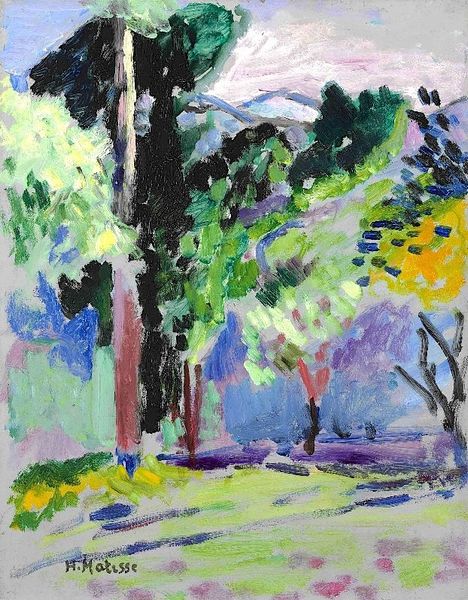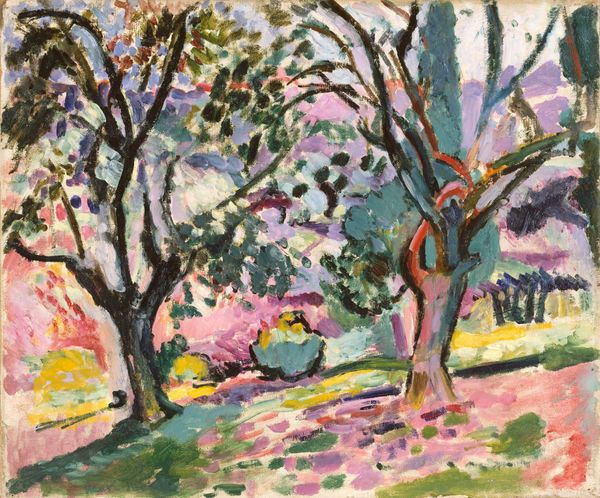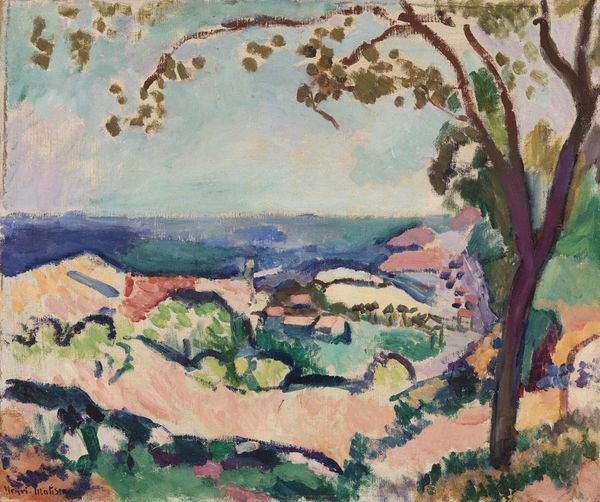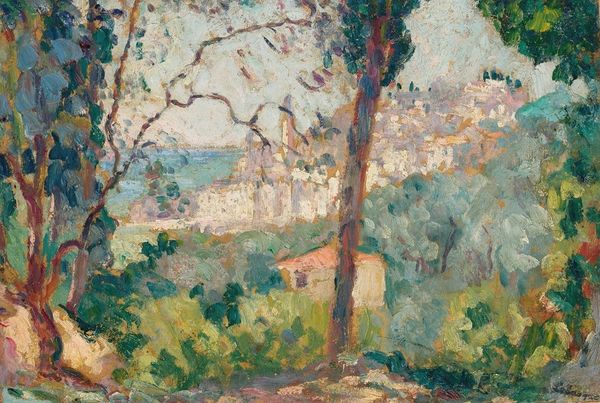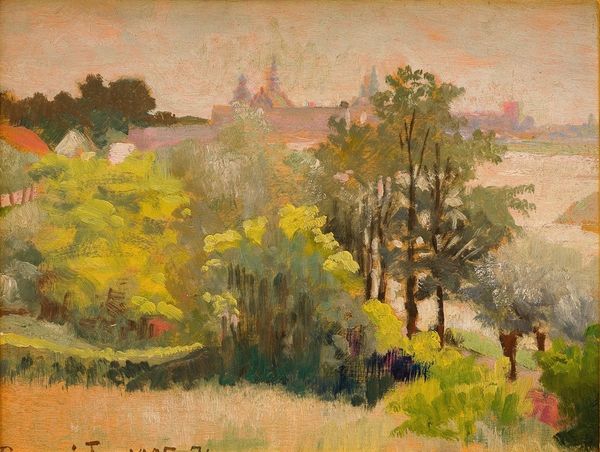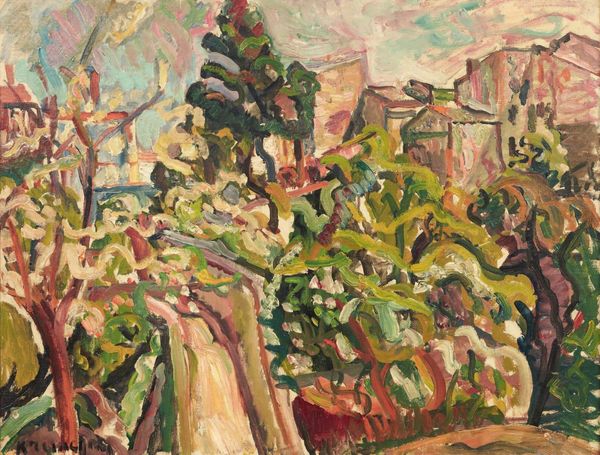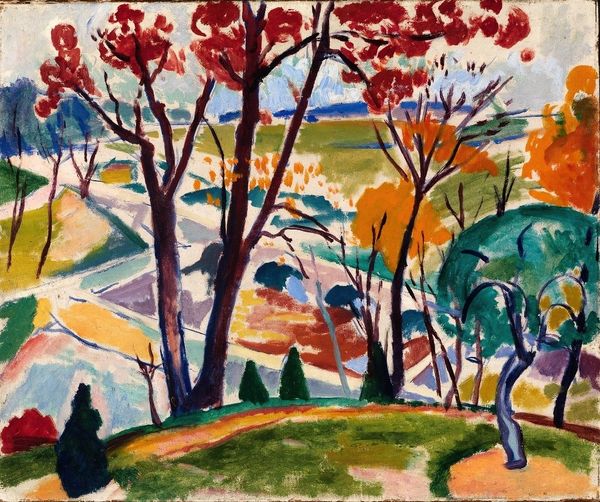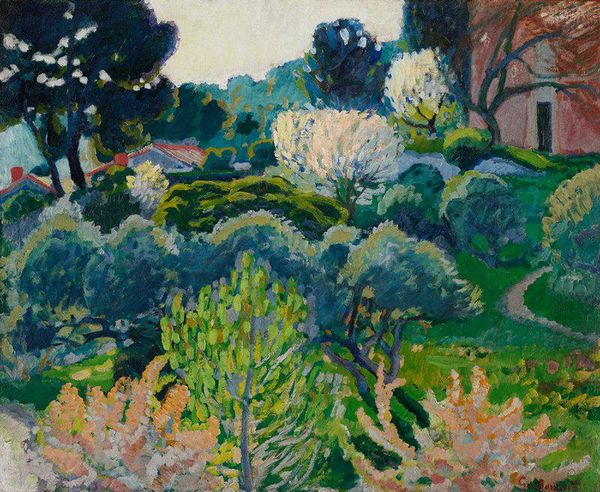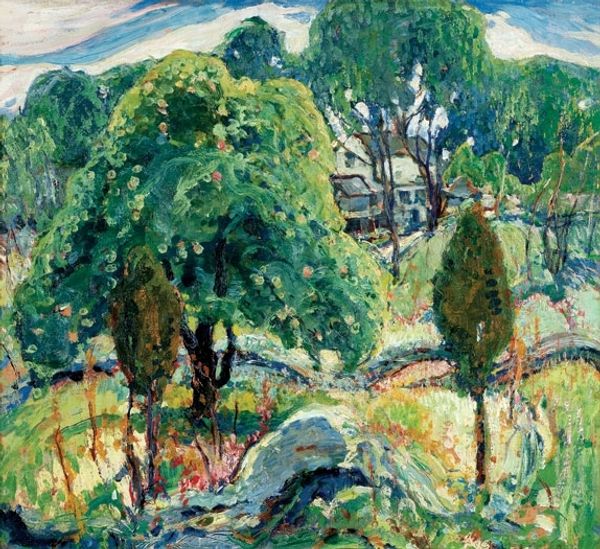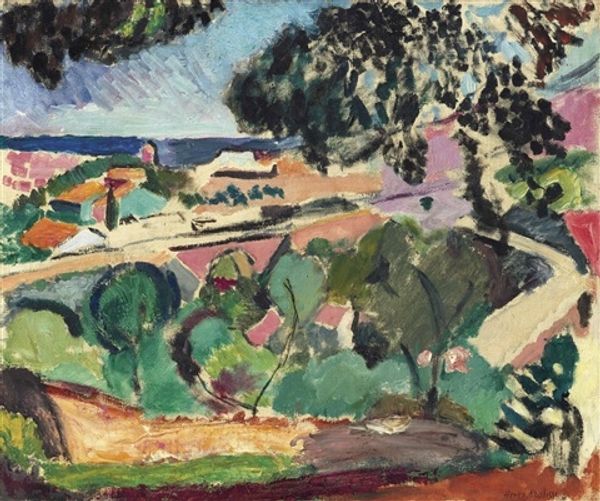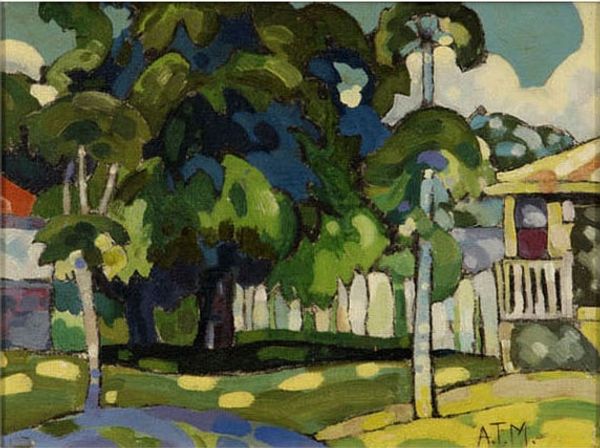
Copyright: Public Domain: Artvee
Curator: This is "Park View from San Remo," painted by Magnus Enckell in 1913. Enckell, a Finnish artist, renders a park scene using oil paints, capturing a sense of place through impressionistic techniques. What are your initial thoughts? Editor: I’m struck by the unusual palette. The lilacs and muted blues create this dreamlike quality, as though the landscape exists just beyond our reach, filtered through memory and feeling. There is almost an ethereal beauty, an invitation to meditate on nature's transient nature. Curator: Enckell spent considerable time in France and Italy. It's worth remembering that the early 20th century saw artists grappling with capturing the experience of modernity. Landscapes weren’t just pastoral scenes; they became about exploring personal sensations within the context of industrial society. How might the park, as a manicured version of nature, act as an in-between zone? Editor: Exactly. The very act of viewing is loaded. Note that small group of figures, seemingly women, in the lower left, set against the dominating landscape. What does it say about the positioning of women and their visibility—or invisibility—within spaces both natural and socially constructed at the turn of the century? There's an intersection there, isn't there? Curator: Certainly. Enckell had strong ties to symbolism and later adopted post-impressionistic elements. What's fascinating here is that while the work uses observed reality, it’s also steeped in a sense of interiority. Editor: And beyond the aesthetic pleasure, I see it raising questions about access and leisure. The park wasn't a space for everyone; it reflected social divisions. These idyllic spaces are, to an extent, imposed on nature, becoming symbols of control. Enckell lets us enjoy the scenery while reminding us about the layered realities embedded in that view. Curator: His art challenges us to explore the spaces and the systems that shape them. The light, color, and perspective encourage introspection and social awareness in equal measure. Editor: So, while “Park View” appears like a quiet vista, it resonates as a vivid echo of its era. It’s beautiful and yet…fraught. A view never is 'just' a view, is it?
Comments
No comments
Be the first to comment and join the conversation on the ultimate creative platform.
